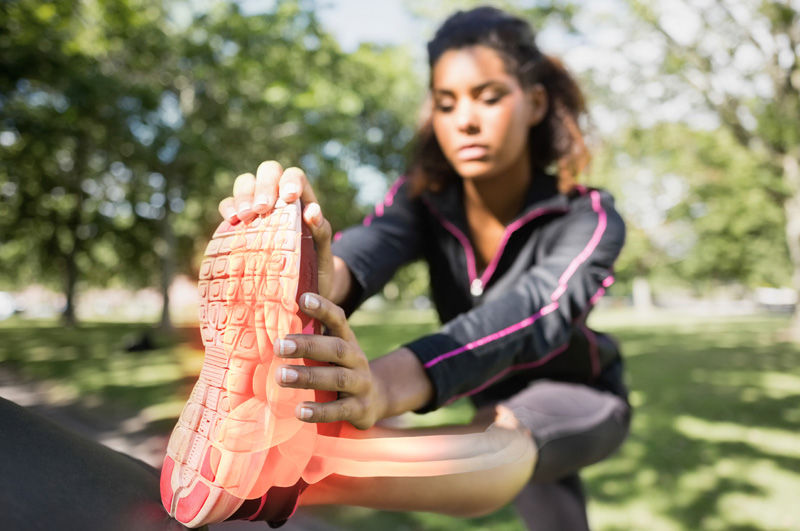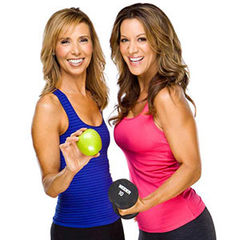
The 206 bones that make up your skeleton perform many roles—provide structure, protect organs, connect to muscle and store calcium. While your first 30 years of life are primetime for building bone, what you do during your adulthood will allow you to maintain the strength of your bones as you age.
Bone is fascinating. It’s an active tissue that’s constantly changing—breaking down and rebuilding. Cells called osteoclasts are responsible for breaking down bone, while osteoblasts are in charge of rebuilding it. During your childhood and adolescence, bone builds faster than it breaks down, but after the age of 30, the building slows down while the breakdown continues. If we don’t take care of our bones and do what’s necessary to protect their strength, they may become weak, a condition known as osteopenia, which can progress to more weakening and become porous. This is called osteoporosis. Weak bones are very susceptible to fracture and breakage. It’s not uncommon to know someone in their 70s or 80s who have fallen and broken a hip or a wrist. These instances are usually due to having osteoporosis, and often, not even knowing it.
What does it take to build strong bones? Your first thought may be taking in more calcium, as we’ve been taught that it is the primary mineral of bones. While that is true, bones require a whole host of vitamins and minerals to properly form. In addition to calcium, bone formation relies on sufficient intake of vitamins D and K, magnesium, phosphorus, manganese, copper, boron and omega-3 fatty acids. Vitamin D is responsible for escorting dietary calcium out of the gut and into the bloodstream, where vitamin K2 helps it bind to bone.
BONE-BUILDING FOODS
Yogurt.
Just one cup of yogurt provides 300 to 400 mg of bone-building calcium.
Fermented foods (sauerkraut, miso, natto).
Fermented foods are well-known for being a rich source of probiotics, are also high in vitamin K2, which is the form of vitamin K that is responsible for depositing calcium into bones.
Spinach.
Spinach is an excellent source of vitamin K1, a fat-soluble vitamin that helps your body in the bone-building process. Vitamin K also plays a role in clotting, so if you take blood-thinning medication, discuss increasing your intake of vitamin K-rich foods with your healthcare provider.
Wild (Alaskan) salmon.
Wild salmon is an excellent source of omega-3 fatty acids, which decrease inflammation that causes bone to be broken down. In addition, it is an excellent source of vitamin D, magnesium and phosphorus.
Walnuts.
Walnuts are a good source of both manganese, a mineral important in creating bone’s connective tissue components, and the omega-3 fatty acid ALA.
Avocados.
Avocados are a good source of boron, which helps support production of bone-supporting hormones estrogen, testosterone, and DHEA, and may support calcium absorption.
Sesame seeds.
Sesame seeds are an excellent source of copper, which is essential for bone mineralization.
Pumpkin seeds.
One ounce of pumpkin seeds provides one-third of your daily needs for phosphorous, a mineral necessary for bone formation.
OTHER FACTORS THAT IMPACT BONE HEALTH
Good nutrient intake is vital in creating and maintaining strong bones. But other factors also impact the health of your bones and attention to them is just as important, though often overlooked.
Exercise, particularly weight-bearing exercises, such as walking, running and weight training, put stress on the bones, which in turn increases osteoblast production and bone to be formed.
Smoking weakens bones and increases risk of osteoporosis.
Fluctuating hormone levels affect bone health. As a woman ages, estrogen production declines until menopause when it ceases altogether. Estrogen is important for strong bones, so age-related decline in estrogen production causes a weakening of bones and increases risk of osteoporosis.
Ethnicity—women who are Caucasian Asian, or Hispanic/Latina are at higher risk of weaker bones.
Small-boned women are at increased risk of osteoporosis.
The best form of vitamin D comes from exposure to sunlight. It is recommended that individuals get at least 10 minutes of sunlight daily (without sunscreen) in order to produce adequate vitamin D. However, during the winter months, many people are not exposed to enough sunshine. It is recommended that you get your vitamin D level measured (25, OHD test), with the goal of achieving blood levels above 50. If your levels are low and you are unable to obtain enough sunlight, it is recommended that you take a vitamin D3 supplement. Please consult with a registered dietitian nutritionist or medical doctor before supplementing your diet.
BOTTOM LINE
It’s never too late to strengthen your bones. Eating a diet rich in bone-building foods, such as yogurt, greens, legumes, nuts and seeds will provide the necessary vitamins and minerals to build bone. In addition, doing some form of weight-bearing exercise daily will also strengthen your bones. If you have multiple risk factors for osteoporosis, talk to your doctor about getting a bone density test (DEXA) in order to determine the health of your bones and to come up with a plan to reduce your risk for osteoporosis.
 by
by 









 by
by